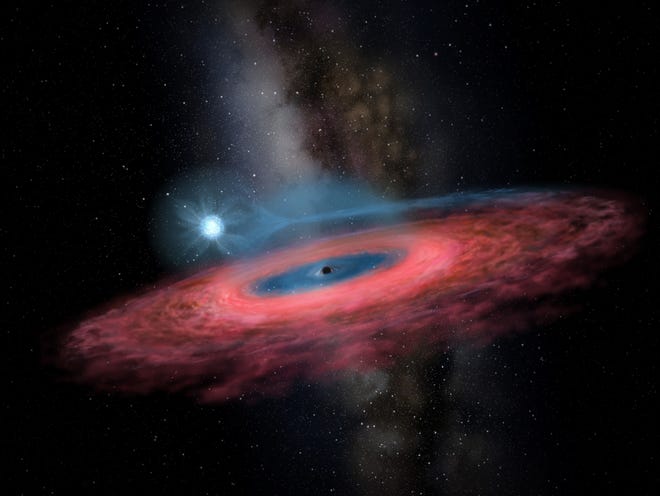
An international team of scientists say they have discovered a stellar-mass black hole with a mass 70 times greater than the sun — so large it defies current theories on how black holes of its kind form.
The discovery of the "monster" black hole was announced this week and reported in the latest issue of Nature. The Chinese-led team says the black hole has been named LB-1 and is located 15,000 lightyears from Earth — our cosmic "backyard," according to a release.
"Black holes of such mass should not even exist in our galaxy, according to most of the current models of stellar evolution," says Liu Jifeng, a professor at the National Astronomical Observatory of China and the head researcher on the study, in the news release.
LB-1 is an example of the most common type of black hole: A stellar black hole. They are the remnants of stars that have died and typically have the mass of 10 to 24 suns, NASA says.
Watch:Three supermassive black holes discovered at the center of one galaxy
Previously, scientists believed that stars in our galaxy would lose much of their mass in the end stages of their life before becoming a black hole, Jifeng says in the release. But a stellar black hole as large as LB-1 wouldn't be possible under this theory.
"This discovery forces us to re-examine our models of how stellar-mass black holes form," the release quotes University of Florida physicist David Reitze.
While LB-1's scale is unprecedented for a stellar black hole, much larger black holes formed through different means also exist: Supermassive black holes can be found at the center of most galaxies and can be millions or billions of times as massive as the sun, NASA says.
